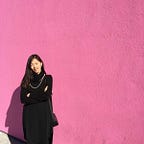Historical Thinking
Brief History of Museums
The word museum comes from a Greek word Mouseion meaning a temple built for the Muses, the goddesses of the art and science. Archeological evidence shows that the first form of museum existed in 530 B.C. in Iraq. It is princess Ennigaldi-Nanna’s collection of Mesopotamian antiquities nicely arranged in a row and labeled in three different languages.
Just like this one, old form of museum started as a private collection collected by nobles and wealthy people. These collections were often gathered due to their own interests and wanting to possess the materials or evidences of new discoveries as if it is a physical encyclopedia. These private collections nowadays are defined as wonder rooms or cabinets of curiosities. Different from this style of encyclopedia, organization and taxonomy style appears in the time of Enlightenment.
Oldest public collection of art in the world began in 1471 at Capitoline Museum. Many public collections appeared but they were often accessible only by the middle and upper classes and more so the visitors had to write for admission and only small group of people were allowed into the galleries each day.
When British Museum opened to the public in 1759, it was a concern that large crowds could damage the artifacts. The Louvre opened to the general public in 1793, but only 3 days a week.
At the time, museums were also served as research centers to preserve and study artifacts. By the late 19th century, scientific researches moved toward micro level that cutting edge research moved from museums to university laboratories.
In the modern days, the purpose of museums varies from collecting preserving for researchers to displaying and showing to the general public for education.
Types of Museums
There are many different types of museums including children’s museums where the museum targets specific audience group, or biographical museums that focuses on a life of specific person, specialized museums such as automobile museums that has specific theme. Among all these, I am interested in art museums, mobile museums, pop up museums and virtual museums.
My Opinion on the History of Museums
I think historical thinking of museum has to go way back when human kinds started to settle down and started living in some type of house because I believe this is when people happened to possessing accessory materials and goods. Before then, people were in living in a nomad style where they were only able to carry essential goods for living.
As humans settle down, communities formed and societies appeared. Naturally a ruling class emerged and so the wealthy. These people soon started collecting things of their own interests including paintings. Then with the rise of value in art and science, buildings with specific purpose appeared and museums were one of those.
Then, people started value in human rights, equal rights for everyone. This lead to museums to open up for the general public which earlier was only allowed for viewing to selected group of people.
Getting higher education became easier and with the technological advancement, study of science moved away from museums and moved to specialized research lab. This phenomenon lead museums to serve more of general public than the researchers and specific professionals unlike the past.
Because museums’ main audience changed, the space served as a place where large portion of the visitors come to spend their leisure time. Within the rise of the internet and smart devices, museums changed their long lasted rule of not allowing the visitors to take photos in museum spaces, rather used the shared photos and information via social media as a type of advertisement to attract younger audiences as well as people who are not familiar with going to museums to use it as a hangout space or even a dating or event location.
With the rise of new technology, such as virtual reality and high resolution cameras, I think museums needs to provide a service where it not only serves as a place for education and preservation for the arts and science but also give an additional value that is different from that of digital museums.
Sources:
- http://ed.ted.com/lessons/why-do-we-have-museums-j-v-maranto
- http://www.npr.org/templates/story/story.php?storyId=97377145
- http://www.npr.org/templates/transcript/transcript.php?storyId=97377145
- http://www.grocerylists.org/
- http://www.npr.org/templates/story/story.php?storyId=5563221
- http://www.npr.org/sections/alltechconsidered/2016/09/04/492408169/these-apps-creations-sure-look-like-masterworks-but-is-it-art
- http://www.npr.org/sections/parallels/2016/08/27/490101453/how-art-transformed-a-remote-japanese-island
- http://www.npr.org/sections/thesalt/2016/07/11/485572488/at-las-moca-a-celebrated-chef-serves-up-dinner-as-art-installation
- http://www.21cmuseumhotels.com/
